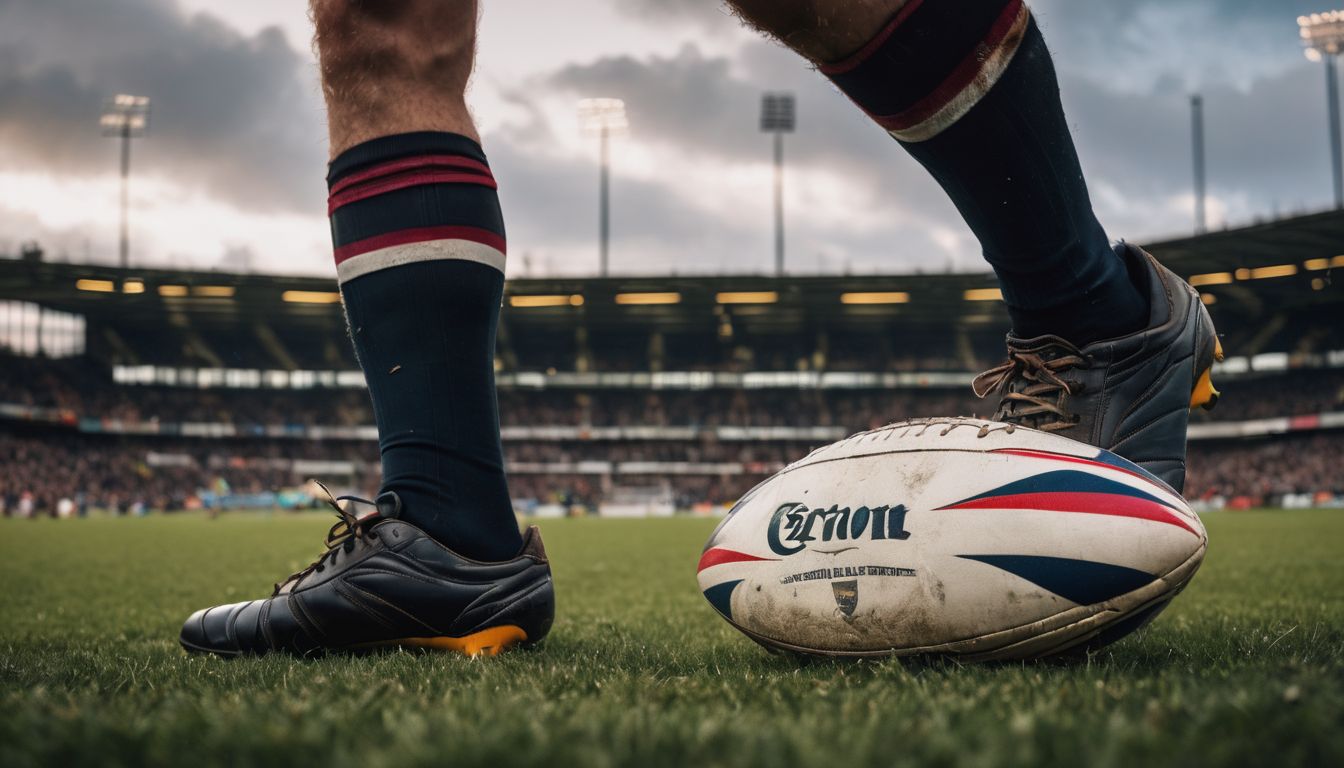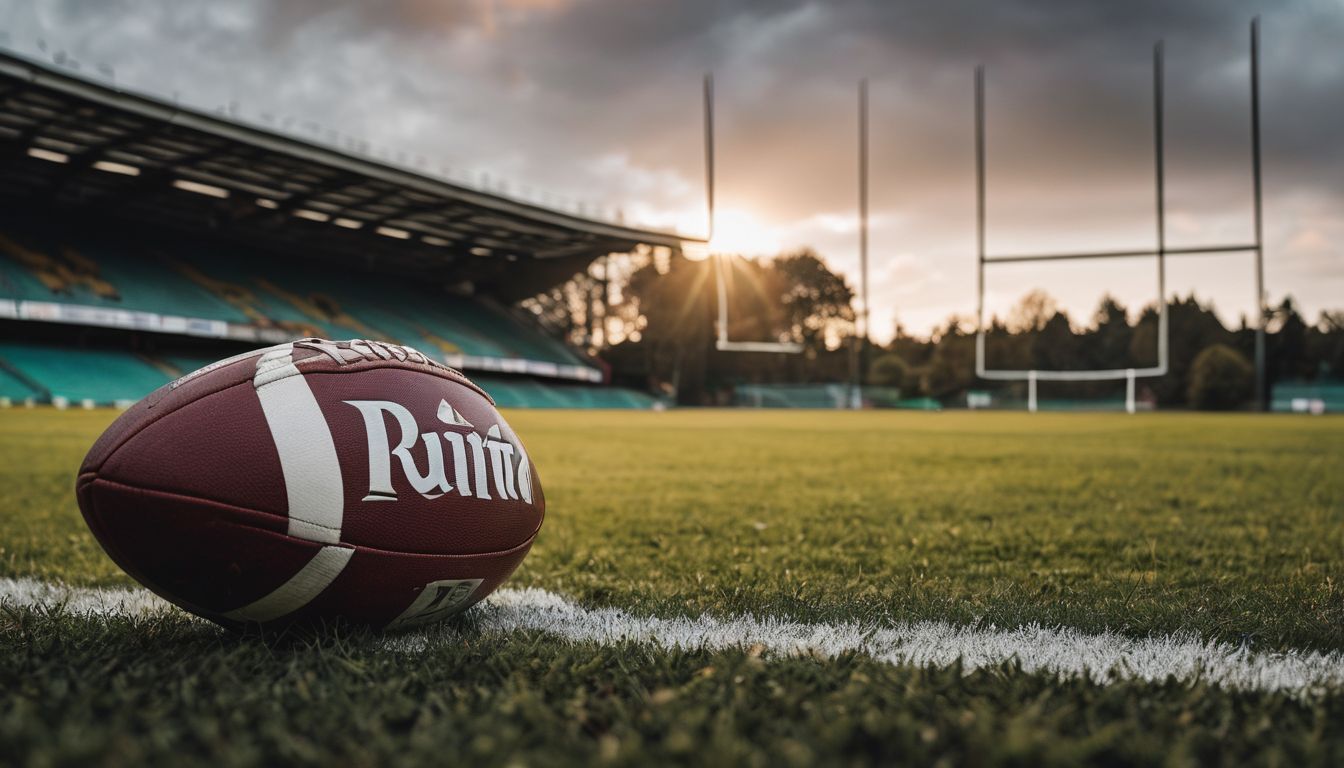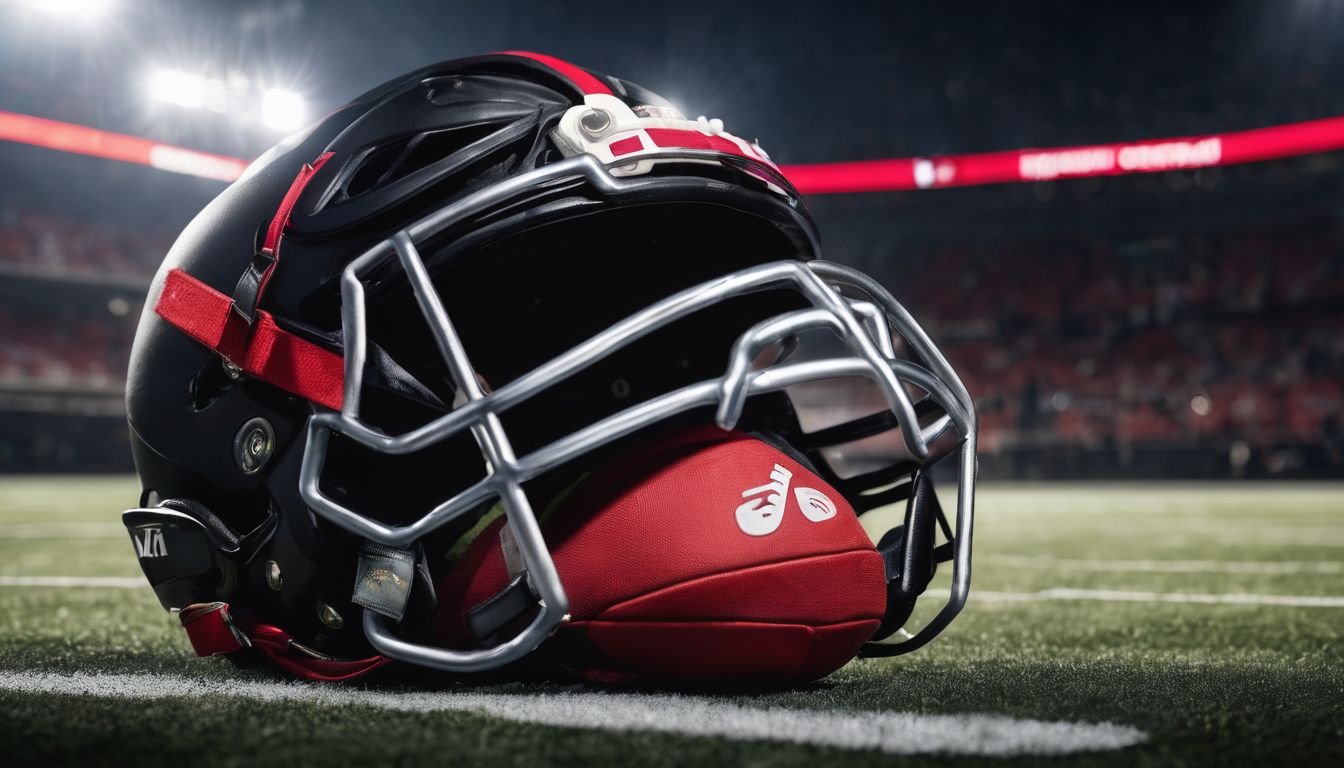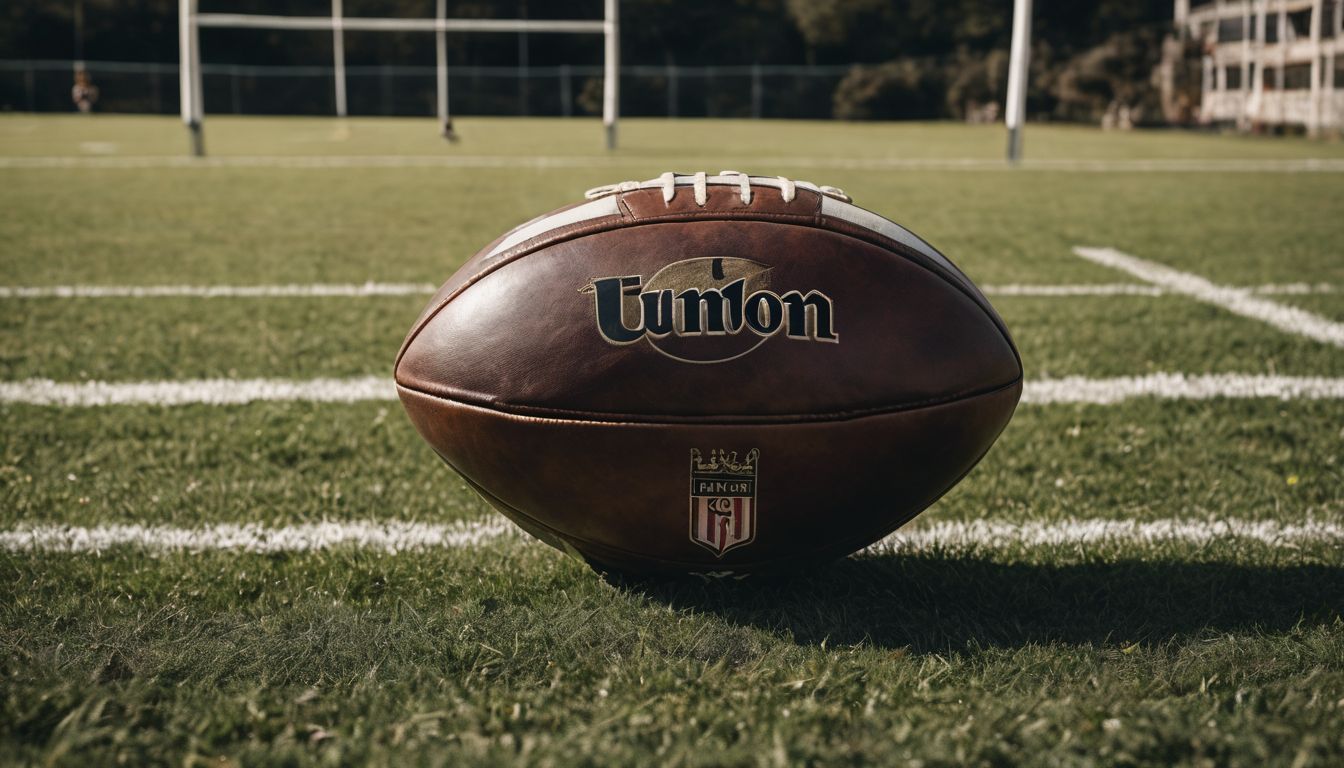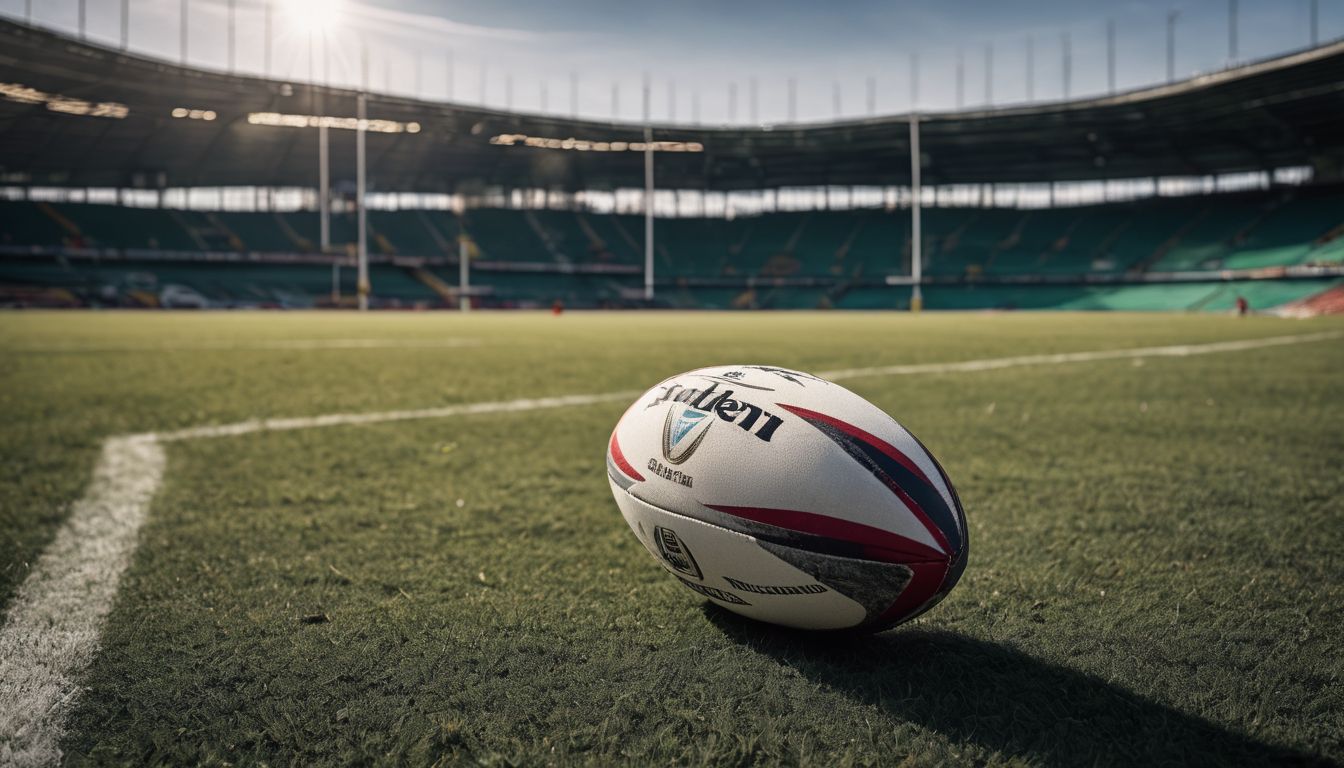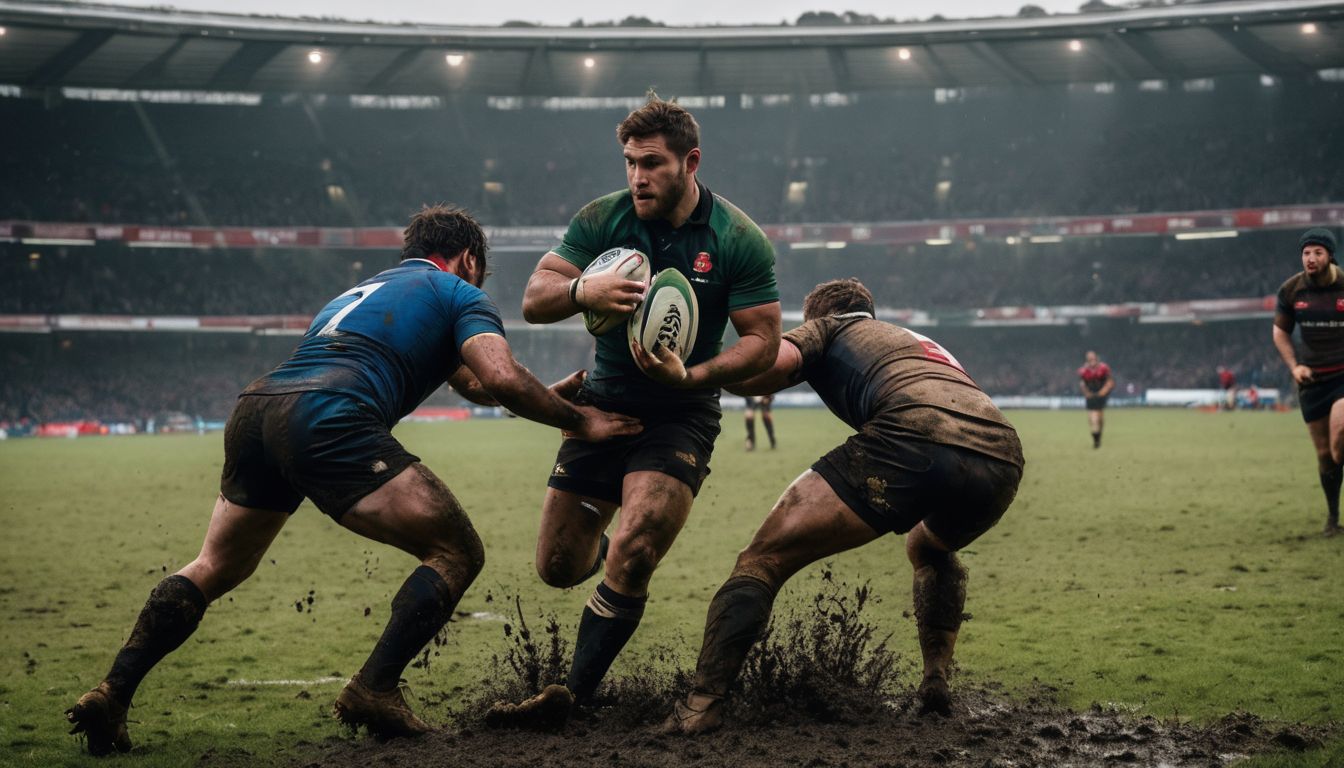Ever wondered why a rugby player is called a ‘hooker‘ or what a ‘fly-half‘ does? Rugby, with its origins in the early 19th century, has unique positions that have evolved over time.
This article will unravel the history behind these quirky names and show how they fit into the thrilling game of rugby. Dive in to discover the tales woven into each position on the pitch!
Key Takeaways
- Early rugby only had forwards and backs, but as the game grew, positions like hooker and fly-half appeared.
- Rule changes since the 1870s shaped each role’s duties on the pitch, leading to our modern rugby union numbering system from 1 to 15.
- Famous players like Jonah Lomu transformed roles such as winger by bringing new levels of skill and athleticism.
- The terms “prop”, “hooker”, or “fly – half” come from a player’s specific functions during play which evolved through history due to strategic demands of the sport.
- Spectators use numbered jerseys and match cards (programmes) introduced for easy identification of players and understanding their roles in the game.
Evolution of Rugby Positions
Rugby positions have evolved from two basic roles to specialised positions, influenced by rule changes and famous players who revolutionised the game. This evolution has led to the development of specific skills and responsibilities for each position on the field.
From two positions to specialised roles
Early rugby union saw players divided simply into forwards and backs. But as the game matured, specific roles emerged to enhance team performance on the field. The creation of these specialised positions reflected a growing strategic complexity within the sport.
With every rule change, new responsibilities and opportunities arose, giving rise to positions like hooker, prop, and number eight among forwards; scrum-half and fly-half began directing plays for the backs.
These new roles weren’t just about who kicked or passed the ball; they shaped how teams formed their offensive lineups and defensive stands during scrums and lineouts. As tactics evolved, so did player skills—each position demanded unique physical attributes and mental sharpness.
A full back required speed coupled with tactical acumen to organise formations from behind, while locks needed both height for lineout superiority and strength for scrum dominance.
This specialisation made rugby a more dynamic contest of strategy as much as it was one of brawn.
Influence of rule changes on position development
Rule changes in rugby have played a pivotal role in the development of various positions within the game. As the rules were first drafted in the 1870s, more specific positions began to emerge, shaping the roles and responsibilities of players on the field.
These changes have led to the evolution of specialised positions such as loosehead prop, hooker, tighthead prop, locks, flankers, and number eight. The influence of rule modifications has not only defined these distinct roles but has also contributed to enhancing team strategies and tactics over time.
The impact of rule changes continues to shape rugby position development as teams adapt to new regulations governing different aspects of play. This ongoing evolution reflects how meticulously crafted laws have brought about innovative player formations that contribute significantly to modern-day rugby dynamics.
Famous players who revolutionised positions
Famous players like Jonah Lomu and David Campese revolutionised the wing position, showcasing exceptional speed, power, and agility that changed the way wingers were perceived. Lomu’s impact in particular reshaped the expectations of a modern winger, introducing a new level of physicality and athleticism to the position.
Meanwhile, Campese’s innovative style of play as a winger challenged traditional norms by incorporating strategic kicking and versatile ball-handling skills into his role.
In addition, legends such as Richie McCaw and George Smith transformed the flanker position with their unparalleled work rate and dynamic playing styles. Their ability to dominate at both breakdowns and open play redefined the role of flankers on the field.
Standard Modern Rugby Union Numbering Schemes
Starting players are traditionally numbered 1-15, with replacements being given numbers from 16 onwards. This numbering system helps to identify the position and role of each player on the field.
Starting players numbered 1-15
Players in a rugby union team are assigned numbers 1-15 based on their positions on the field. Here’s a breakdown of the numbering scheme and the corresponding positions:
- Number 1: Loosehead Prop – Positioned on the left side of the front row in the scrum, providing stability and power.
- Number 2: Hooker – Essential for winning possession during set pieces like lineouts and scrums.
- Number 3: Tighthead Prop – Anchors the right side of the front row, supporting with strength and technique.
- Number 4 & 5: Locks – Act as key players in lineouts and provide power in scrums, also known for their mobility around the field.
- Number 6 & 7: Flankers – Renowned for their tackling ability, ball-winning skills at rucks, and support in attacking play.
- Number 8: Positioned at the back of the scrum, contributes to both defensive and attacking play while possessing strong carrying abilities.
- Number 9: Scrum-Half – Directs play from behind the scrum, links forwards to backs, and orchestrates quick distribution of the ball.
- Number 10: Fly-Half – The playmaker; responsible for tactical kicking, distributing passes, and decision-making in attack.
- Numbers 11 & 14: Wings – Known for speed and agility; crucial for finishing off attacking moves by scoring tries.
- Number 12 &13: Inside Centre (Second Five-Eighth) & Outside Centre (Centre) – Key contributors in both defense and attack providing support to fly-half or charging through defenses themselves
- Number 15: Fullback – Positioned behind all other backs during open play; critical role in defending kicks, counter-attacking, and last line of defense.
Replacements numbered 16 onwards
Rugby teams have 23 players, including eight replacements who are numbered from 16 onwards. These players are critical as they provide fresh energy and skills when substituted onto the field.
The replacements typically cover various positions to ensure flexibility in adjusting team strategy or dealing with injuries during the game.
The numbering of replacements allows for quick identification by both coaches and fans. It also enables seamless communication regarding substitutions among team members, coaching staff, and match officials.
Explanation of Rugby Positions
In rugby, there are various player positions that have specific roles on the field. Each position requires different skills and attributes to excel in their duties, from the powerful prop to the nimble fullback.
Let’s explore the history and development of these unique roles in rugby.
Prop
Rugby positions include the role of the prop, which is vital in both scrums and lineouts. Numbered 1 and 3, these players are strong and sturdy, providing essential stability to the scrum by engaging with their counterparts on the opposing team.
The loosehead prop wears number 1 while the tighthead prop wears number 3, each offering crucial support to ensure a solid foundation for effective ball retention and distribution.
Props also play a key role in supporting the hooker during lineout throws, where their strength and technique are critical for securing possession or disrupting the opponent’s set-piece.
Hooker
The hooker, wearing the number 2 jersey, is a vital member of the rugby team’s forward pack. Positioned in the middle of the front row during scrums, this player requires strength and skill to bind with their own props and withstand pressure from the opposition.
The hooker’s primary role is to use their feet to “hook” or strike at the ball once it enters the tunnel during a scrum. Additionally, they play an essential part in lineouts by throwing accurate and well-timed throws to lifters.
Continuing on with the explanation of other key positions in rugby union, let’s delve into – Lock.
Lock
Locks are numbered four and five in the standard modern rugby union numbering scheme. They play a vital role in securing possession during set pieces, particularly lineouts, where their height and strength make them valuable assets.
The evolution of rugby positions has seen locks develop into versatile players who are not only crucial in the tight phases but also contribute to ball-carrying and defensive duties.
The names of rugby positions have evolved over time, reflecting the sport’s dynamic nature and strategic demands.
Flanker
Flankers are vital players in rugby, known for their agility and versatility on the field. Positioned on either side of the scrum, these players have a crucial role in both attacking and defensive phases of the game.
Their primary responsibilities include disrupting the opposition’s play, supporting teammates during set pieces, such as lineouts and scrums, and making impactful tackles across the field.
With their speed and strength, flankers are instrumental in securing possession of the ball and providing crucial support to their team’s backline players.
These dynamic athletes often serve as a bridge between forwards and backs, requiring them to possess a unique blend of physicality, endurance, and tactical acumen. Flankers often contribute significantly to turnovers by seizing opportunities at rucks or mauls while also fulfilling key roles in offensive moves.
Number Eight
Moving on from the dynamic role of flankers, we come to the crucial position of number eight. This player holds a pivotal place in both attack and defense, bridging the gap between forwards and backs.
Known for their strength, speed, and ball-handling skills, the number eight is often considered a leader on the field. Their ability to provide quick support to teammates or make powerful runs can change the course of a game.
The history behind this name reflects its versatile role over time, influencing game strategies and tactics. The evolution of rugby positions brought about changes in responsibilities that have shaped modern playstyles.
Scrum-Half
The scrum-half, numbered as 9 in rugby union, is a pivotal player often referred to as the “half-back.” This position originated from the early days of rugby and holds a crucial role in linking the forwards and backs.
The scrum-half plays an active part in distributing the ball to teammates during set pieces such as scrums, line-outs, and rucks. Additionally, they are responsible for organising defensive patterns and initiating attacking plays from the base of rucks.
Rugby fans recognise that the scrum-half’s agility and decision-making abilities are essential attributes for this position due to their involvement in both offensive and defensive phases of play.
Fly-Half
The fly-half, numbered 10, is a pivotal figure in rugby union. This player acts as the team’s chief playmaker and often serves as the key decision-maker, orchestrating attacking moves by directing the back line.
They are also responsible for kicking tactically and controlling general play with their vision and strategic insight.
Playing at a crucial position between the forwards and backs, the fly-half must possess excellent passing, kicking, running, and defensive abilities. Their role demands quick thinking under pressure and precise execution of various skills to exploit opportunities during the game.
Wing
Transitioning from the pivotal role of the fly-half, we now turn our attention to the dynamic position of the wing. As one of the backs in rugby union, wings are known for their speed and agility on the field.
Often positioned on opposite ends of the backline, these players play a crucial role in both defense and attack. Their primary objective is to outpace their opponents as they move down the touchlines and create scoring opportunities for their team.
Wings have evolved over time to become integral parts of modern rugby formations, adapting to changes in tactics and strategies. With an emphasis on speed and precision, wings are essential components of an effective attacking unit while also providing crucial support in defensive situations.
Fullback
The fullback, positioned at the back of the rugby team’s defensive line, plays a pivotal role in fielding opposition kicks and launching counter-attacks. With an excellent spatial awareness and strong kicking ability, the fullback often acts as the last line of defence, making crucial tackles and organising defensive strategies.
Additionally, they are instrumental in joining attacking plays by providing extra support to the backline during offensive phases of play.
The fullback’s name reflects their position at the “full back” of the team formation, where they must be ready to react quickly to any play on both offence and defence. Known for their speed, agility, and tactical acumen, this player is crucial in influencing game momentum through strategic positioning and timely decision-making.
Origin of Player Numbering/Lettering
Player numbering and lettering were introduced in rugby for spectator identification, with match cards (programmes) used to help fans keep track of the players on the field. To learn more about the fascinating history behind rugby positions and how they have evolved over time, keep reading!
Introduced for spectator identification
Rugby positions were assigned numbers to help spectators identify players on the field. This system of numbering, introduced for spectator identification, allowed fans to follow and recognise their favourite players during matches.
The innovative use of match cards (programmes) also played a crucial role in providing detailed information about each player’s position and number, enhancing the overall experience for spectators.
Understanding the history behind the names and numbers of rugby positions adds depth to one’s appreciation of the sport’s rich evolution over time. The introduction of these numbered positions further contributed to creating a unique identity for each player, contributing to the sport’s enduring legacy.
Use of match cards (programmes)
Initially introduced for spectator identification, the use of match cards (programmes) has become an integral part of the rugby experience. These cards provide fans with essential information about players, such as their names, positions, and jersey numbers.
In addition to aiding spectators in identifying individual players on the field, match cards also contribute to a deeper understanding of each player’s role within the team and their specific position in the game.
Furthermore, match cards enable fans to identify key players quickly and appreciate the importance of various positions on the field. This enhances spectators’ engagement with the game by allowing them to follow their favorite players or observe specific positions throughout the match.
Conclusion
The history of rugby positions reflects the sport’s evolution over nearly 200 years, showcasing how player roles and strategies have changed. Rugby terminology has adapted to reflect these changes, influenced by rules adjustments and player skills.
The development of specific positions, such as prop, flanker, and fly-half, highlights the game’s rich and diverse evolution. The names of rugby positions hold a testament to the sport’s dynamic nature and its continuous adaptation to new challenges and opportunities.
FAQs
1. Why do rugby positions have unique names?
Rugby positions have unique names that come from the game’s history and the specific roles players take on the field, like ‘scrum-half’ or ‘fly-half’, which tell us about their duties and place in rugby formation evolution.
2. How did rugby player numbering become a thing?
Rugby player numbering started to help identify players easily during a game. Each number matches with specific rugby positions and roles, making it clear who is doing what in a match.
3. What’s the difference between rugby forward and back positions?
In rugby, forward positions are for players who are involved in strength-based tasks like scrums, while back positions are for those who run fast and handle passing the ball during attack plays.
4. Can you explain how rugby scrum positions work?
Rugby scrum positions involve eight forwards locking together in three rows to contest for the ball against their opponents, each with a specialised role to play within this key part of the game.
5. Are numbers important when talking about rugby player roles?
Yes! Rugby position numbers not only help identify each player but also give clues about their main duties on the pitch; lower numbers usually mean they’re forwards and higher ones indicate they’re backs.



